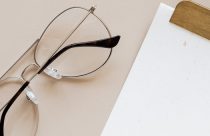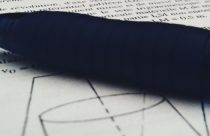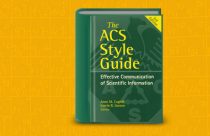How to Effectively Use the Turabian Style Guide in Research Papers

Image credits:Kristina Devoe via Kom-mun-i-ka’-ti-o
Whenever you refer to another work, or idea in a written document, it is important to cite the source. There are a number of different style guides, which provide instructions on how to acknowledge the work and ideas of others. The style guide you should use will depend on the preferences of your academic institution (in the case of a thesis or dissertation), or the journal to which you are submitting (in the case of a research paper). In this article, we discuss the Turabian style guide to use while citing your research papers, dissertation, or thesis.
What is Turabian Style Guide?
The Turabian Style Guide was developed by Kate Larimore Turabian, a graduate school dissertation secretary and editor at the University of Chicago. In her Manual for Writers of Research Papers, Theses, and Dissertations, she simplified the contents of The Chicago Manual of Style for students and researchers. The first edition was published in 1937, and since then it has been updated regularly to align with the latest edition of The Chicago Manual of Style. It is now in its eighth edition.
Kate Turabian’s manual is structured in three parts:
- A thorough introduction to research writing
- Full explanation of the two main scholarly citation styles (notes-bibliography and author-date)
- Comprehensive guidance on editorial style, including punctuation, capitalization, spelling, and table formatting
The notes-bibliography and author-date citation styles are similar, apart from their use of notes (notes-bibliography) or parenthetical references (author-date) within the text. In this article, these two citation styles are outlined in detail and the use of both styles is illustrated with specific examples.
Turabian style is used by students from Business, History, and the Fine Arts whose research papers are not intended for publication. According to the latest edition, the font size should be 12 point in either Arial or Times New Roman font style.
Are Turabian and Chicago Style Same?
While Turabian and Chicago Styles are nearly identical, the former aims to simplify some of the aspects of the latter for students writing research papers not intended for publication.
Both these styles are different in numbering system for notes. Chicago style uses a number in parentheses followed by a period, a space and then the source information (1. Chicago Manual of Style). Turabian style uses superscript¹ in the text of the paper and in the footnotes. Additionally, the superscript number is followed by the source information (¹Turabian Style).
Turabian citation guide includes usage of different citation systems (Author-Date or Notes-Bibliography). Therefore, you should check your assignment instructions to determine the system your instructor wants you to use.
What are the Two Forms of Turabian Style?
There are two forms of Turabian Style of referencing:
- Notes-bibliography Style
- Author-date Style
How Do You Write “Notes-Bibliography” in Turabian Style?
The notes-bibliography format of the Chicago/Turabian citation style is used widely in the humanities and in most fields in social sciences. Furthermore, this style presents bibliographic information in footnotes or endnotes. In most cases, a bibliography is provided. The general format is an indication of cited sources within the text by a superscript number, which comes after the full stop. Source information is provided in a correspondingly numbered list at the end. Specific examples are provided below and more examples can be found here.
Book with Two or More Authors
Citation: Lunsford, Andrea, and Lisa Ede. Singular Texts/Plural Authors: Perspectives on Collaborative Writing. Carbondale: Southern Illinois University Press, 1990
Note: 8. Andrea Lunsford and Lisa Ede, Singular Texts/Plural Authors: Perspectives on Collaborative Writing (Carbondale: Southern Illinois University Press, 1990), 59-60
Journal Article
Citation: Gautreau, Ronald, and Jeffrey M. Cohen. “Birth and Death of a Black Hole.” American Journal of Physics 65 (May 1997): 444-446
Note: 14. Ronald Gautreau and Jeffrey M. Cohen, “Bird and Death of a Black Hole,” American Journal of Physics 65 (May 1997): 445
Magazine Article
Citation: Swartz, Mimi. “An Enron Yard Sale.” New Yorker, May 6, 2002
Note: 13. Mimi Swartz, “An Enron Yard Sale,” New Yorker, May 6, 2002, 51
Website
Citation: Harvey, Billy. Billy Harvey Has Had Hair Longer Than Yours. http://www.billyharvey.com (accessed May 25, 2005)
Note: 18. Billy Harvey, Billy Harvey Has Had Hair Longer Than Yours, http://www.billyharvey.com (accessed May 25, 2005)
How do You Write “Author-date Style” in Turabian?
The author-date format of the Chicago citation style is more concise and is mainly used in the physical, natural, and some fields in social sciences. Furthermore, this style briefly cites each source in parentheses within the text using the author’s last name and date of publication. If a specific section is cited, page numbers should also be included, otherwise, only the author and date is provided. Details of each citation are then provided in a full reference list at the end of the document.
Book with Two or More Authors
Reference list: Morey, Peter, and Amina Yaqin. 2011. Framing Muslims: Stereotyping and Representation after 9/11. Cambridge, MA: Harvard University Press
Parenthetical citation: (Morey and Yaqin 2011)
Journal Article
Reference list: Bogren, Alexandra. 2011. “Gender and Alcohol: The Swedish Press Debate.” Journal of Gender Studies 20, no. 2 (June): 155-69
Parenthetical citation: (Bogren 2011)
Magazine Article
Reference list: Lepore, Jill. 2011. “Dickens in Eden.” New Yorker, August 29
Parenthetical citation: (Lepore 2011)
Website
Reference list: Google. 2012. “Privacy Policy.” Google Policies & Principles. Last modified July 27. Accessed January 3, 2013. http://www.google.com/policies/privacy/
Parenthetical citation: (Google 2012)
Ever faced difficulty in determining how to use the Turabian style of referencing? Follow this method to cite your manuscript without any errors. Let us know about how you used the Turabian Style while referencing. You can also visit our Q&A forum for frequently asked questions related to different aspects of research writing and publishing answered by our team that comprises subject-matter experts, eminent researchers, and publication experts.









